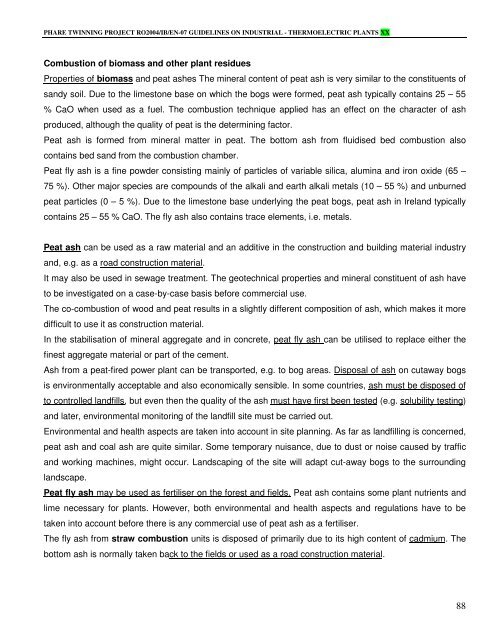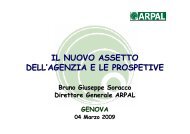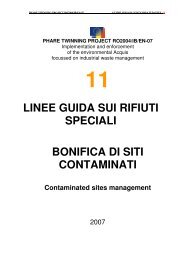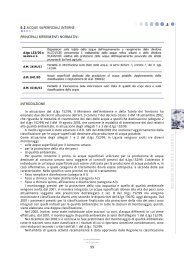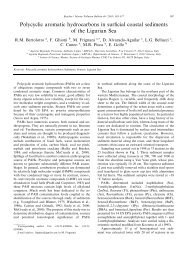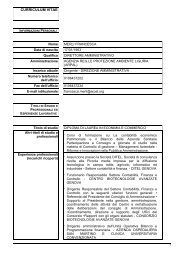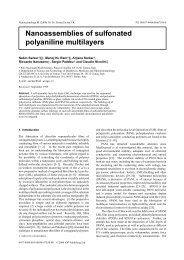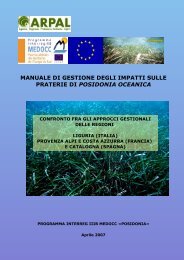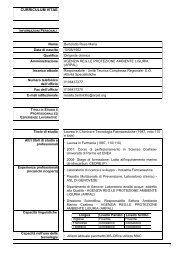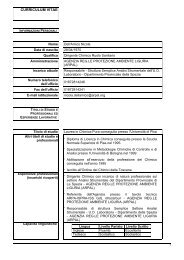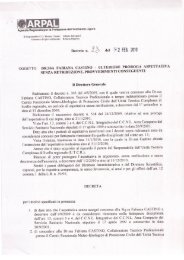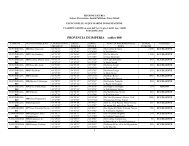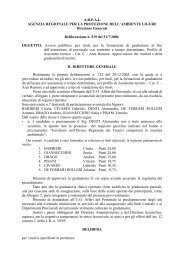Rifiuti da centrali termoelettriche - ARPAL
Rifiuti da centrali termoelettriche - ARPAL
Rifiuti da centrali termoelettriche - ARPAL
Create successful ePaper yourself
Turn your PDF publications into a flip-book with our unique Google optimized e-Paper software.
PHARE TWINNING PROJECT RO2004/IB/EN-07 GUIDELINES ON INDUSTRIAL - THERMOELECTRIC PLANTS XX<br />
Combustion of biomass and other plant residues<br />
Properties of biomass and peat ashes The mineral content of peat ash is very similar to the constituents of<br />
sandy soil. Due to the limestone base on which the bogs were formed, peat ash typically contains 25 – 55<br />
% CaO when used as a fuel. The combustion technique applied has an effect on the character of ash<br />
produced, although the quality of peat is the determining factor.<br />
Peat ash is formed from mineral matter in peat. The bottom ash from fluidised bed combustion also<br />
contains bed sand from the combustion chamber.<br />
Peat fly ash is a fine powder consisting mainly of particles of variable silica, alumina and iron oxide (65 –<br />
75 %). Other major species are compounds of the alkali and earth alkali metals (10 – 55 %) and unburned<br />
peat particles (0 – 5 %). Due to the limestone base underlying the peat bogs, peat ash in Ireland typically<br />
contains 25 – 55 % CaO. The fly ash also contains trace elements, i.e. metals.<br />
Peat ash can be used as a raw material and an additive in the construction and building material industry<br />
and, e.g. as a road construction material.<br />
It may also be used in sewage treatment. The geotechnical properties and mineral constituent of ash have<br />
to be investigated on a case-by-case basis before commercial use.<br />
The co-combustion of wood and peat results in a slightly different composition of ash, which makes it more<br />
difficult to use it as construction material.<br />
In the stabilisation of mineral aggregate and in concrete, peat fly ash can be utilised to replace either the<br />
finest aggregate material or part of the cement.<br />
Ash from a peat-fired power plant can be transported, e.g. to bog areas. Disposal of ash on cutaway bogs<br />
is environmentally acceptable and also economically sensible. In some countries, ash must be disposed of<br />
to controlled landfills, but even then the quality of the ash must have first been tested (e.g. solubility testing)<br />
and later, environmental monitoring of the landfill site must be carried out.<br />
Environmental and health aspects are taken into account in site planning. As far as landfilling is concerned,<br />
peat ash and coal ash are quite similar. Some temporary nuisance, due to dust or noise caused by traffic<br />
and working machines, might occur. Landscaping of the site will a<strong>da</strong>pt cut-away bogs to the surrounding<br />
landscape.<br />
Peat fly ash may be used as fertiliser on the forest and fields. Peat ash contains some plant nutrients and<br />
lime necessary for plants. However, both environmental and health aspects and regulations have to be<br />
taken into account before there is any commercial use of peat ash as a fertiliser.<br />
The fly ash from straw combustion units is disposed of primarily due to its high content of cadmium. The<br />
bottom ash is normally taken back to the fields or used as a road construction material.<br />
88


